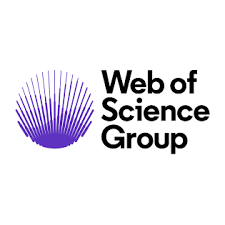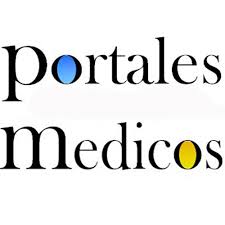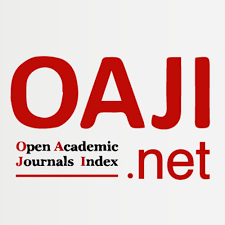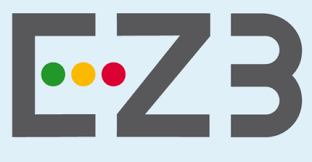Actividad antibacteriana e hipoglicemiante de los extractos crudos del Phyllanthus Salviaefolius H.B.K. (Euphorbiaceae) de Los Andes venezolanos
Resumen
En este trabajo se estudiaron las actividades antibacteriana e hipoglicemiante de los extractos de diclorometano y metanol de las hojas del Phyllanthus salviaefolius H.B.K. (Euphorbiaceae). La actividad antibacteriana se determinó por el método de difusión en agar con discos contra bacterias Gram positivas y Gram negativas. El extracto metanólico presentó actividad contra Staphylococcus aureus ATCC 25923 y Enterococcus faecalis ATCC 29212. El extracto de diclorometano presentó actividad hipoglicemiante óptima a la dosis de 100 y 300 mg/kg. De acuerdo a la literatura consultada es la primera vez que se reporta la actividad biológica para esta especie vegetal.
Palabras clave
Texto completo:
PDFReferencias
Jones SB. Sistemática Vegetal. Editorial McGRAW-HILL: México; 1988.
Webster GL. Flora de Nicaragua. Introducción Gimnospermas y Angiospermas. Missouri Botanical Garden Press; 2001.
Kala C, Dhyani P, Sajwan B. Developing the medicinal plants sector in northern India: Challenges and opportunities. J. Ethnobiol. Ethnomedicine; 2006, 32: 1-15.
Muthu C, Ayyanar M, Raja N, Ignacimuthu S. Medicinal plants used by traditional healers in Kancheepuram District of Tamil Nadu, India. J. Ethnobiol. Ethnomedicine; 2006, 2: 43.
Babillo VM, Schnee L. Clave de las Familias de Plantas Superiores de Venezuela. Revista de la Facultad de Agronomía. Universidad Central de Venezuela; 1965: 144.
Ministerio del Ambiente y de los Recursos Naturales Renovables. Catálogo de la Flora de Venezuela; 1998.
Calixto JB, Santos AR, Paulino N, Cechinel V, Yunes RA. The plants of the genus Phyllanthus as a potential source of new drugs. Ciênc. Cult. (Säo Paulo); 1997, 49: 422-32.
Gutiérrez YI, Miranda MM, Barrio G, Varona TN, Mayoral JJ. Evaluación farmacognóstica y fitoquímica preliminar de Phyllanthus rebicularis HBK. Rev. Cubana Farm.; 2000, 34: 56-62.
Gertsch J, Tobler RT, Brun R, Sticher O, Heilmann J. Antifungal, antiprotozoal, cytotoxic and piscicidal properties of Justicidin B and new arylnaphthalide lignan from Phyllanthus piscatorum. Planta Médica; 2003, 69: 420-24.
Bagalkotkar G, Sagineedu S, Saad M, Stanslas J. Phytochemicals from Phyllanthus niruri Linn., and their pharmacological properties: a review. Journal of Pharmacy and Pharmacology; 2006, 58: 1559-70.
Lam SH, Wang CY, Chen CK, Lee SS. Chemical investigation of Phyllanthus reticulatus by HPLC-SPE-NMR and conventional methods. Phytochemical Analysis; 2007, 18: 251-55.
Lans C. Ethnomedicines used in Trinidad and Tobago for urinary problems and Diabetes mellitus. J. Ethnobiol. Ethnomedicine; 2006, 2: 45.
Kumar D, Kumar S, Vasudeva N. A review: chemistry and biological activities of genus Phyllanthus. Journal of Plant Sciences; 2006, 1: 339-46.
Bhattacharjee R, Sil PC. Protein isolate from the herb, Phyllanthus niruri L. (Euphorbiaceae), plays hepatoprotective role against carbon tetrachloride induced liver damage via its antioxidant properties. Food and Chemical Toxicology; 2007, 45: 817-26.
Unander DW, Webster GL, Blumberg BS. Uses and Bioassays in Phyllanthus (Euphorbiaceae): a compilation II. The subgenus Phyllanthus. Journal of Ethnopharmacology; 1991, 34: 97-133.
Fernández RJ, Barrio AG, Romeu AB, Gutiérrez Y, Valdés VS, Parra F. Herpes simplex virus type 1. Phyllanthus orbicularis. Antiviral activity. Virucidal activity. Phytotherapy Research; 2003, 17: 980-82.
Huang RL, Huang YL, Ou JC, Chen CC, Hsu FL, Chang C. Screening of 25 compounds isolated Phyllanthus species for anti-human Hepatitis B virus in vitro. Phytother Res.; 2003, 17: 449-53.
Valdés S, Barrio G, Gutiérrez Y, Morier L. Evaluación preliminar de la actividad antiviral del extracto acuoso de Phyllanthus orbicularis frente al virus VHS-1. Rev. Cubana Med. Trop.; 2006, 55: 169-73.
Lam WY, Leung KT, Tik-Wan LP, Ming-Yuen LS, Lik-Yuen CH, Fung KP, Eng-Choon OV, Miu-Yee WM. Antiviral effect of Phyllanthus nanus ethanolic extract against Hepatitis B virus (HBV) by expression microarray analysis. Journal of Cellular Biochemistry; 2006, 97: 795-812.
Calderón A, Valua F, Castro A, Félix L. Determinación de compuestos orgánicos de Phyllanthus niruri L. “Chanca Piedra”, actividad antibacteriana y antiviral. V Congreso Mundial de Medicina Tradicional Lima-Perú. 2005. Disponible en: congreso mundial/ 000data/ temlib.htm-256k www.medicina.usmp.edu.pe/
Kumar S, Sachdeva N, Amir M, Kumar A, Singh SK. Free radical scavenging effect of Phyllanthus simplex: in vitro and in vivo study. Saudi Pharmaceutical Journal; 2007, 15: 55-59.
Chatterjee M, Sil PC. Hepatoprotective effect of aqueous extract of Phyllanthus niruri on nimesulide-induced oxidative stress in vivo. Indian Journal of Biochemistry & Biophysics; 2006, 43: 299-305.
Velasco J, Contreras E, Buitrago D, Velazco E. Efecto antibacteriano de Virola sebifera sobre Staphylococcus aureus resistente a meticilina. Ciencia; 2005, 13: 411-415.
CLSI. Clinical and Laboratory Standars Institute. Performance standars for antimicrobial susceptibility testing; eighteenth informational supplement. CLSI document M100-S18 [ISBN 1-56238-653-0]. Clinical and Laboratory Standars Institute, 940 West Valley Road, Siute 1400, Wayne, Pennsylvania 19087-1898 USA; 2008.
Verspohl EJ. Recommended Testing in Diabetes Research. Planta Médica; 2002, 68: 581-90.
Guerrero JA, Hersch P, Pedraza CJ, Navarrete A, Mata R. Antihyperglycemic effect of constituents from Hintonia standleyana in streptozotocin-induced diabetic rats. Planta Médica; 2005, 71: 1-7.
Ryan K, Ray CS. Microbiología Médica. 4 ed. México: McGraw-Hill Interamericana; 2005.
Velásquez J, Lizaraso F, Zetola N, Pamo O, Sánchez L, Wong W,
Hernández R. Vigilancia de la resistencia de Enterococcus sp., a la vancomicina y evaluación in vitro de nuevas alternativas terapéuticas. Rev. Soc. Perú. Med. Interna; 2002ª, 15: 66-72.
Velásquez J, Lizaraso F, Wong W, Alfaro C, Véliz J, Salazar J, Larrea H, Gamarra J, Sacsaquispe R. Vigilancia de la resistencia de Sthaphylococcus aureus a la oxacilina-vancomicina y patrones de corresistencia. Rev. Soc. Per. Med. Interna; 2002b, 15:184-89.
Picazo J, Betriu C, Rodríguez I, Culebras E, Gomez M. Vigilancia de resistencia a los antimicrobianos: Estudio VIRA. Enferm Infecc Microbiol Clin.; 2004, 22: 517-25.
Alvarez C, Cortes J, Arango A, Correa C, Leal A. Resistencia antimicrobiana en unidades de cuidado intensivo de Bogotá, Colombia, 2001-2003. Rev. Salud Pública; 2006, 8: 86-101.
Goun E, Cunningham G, Chu D, Nguyen C, Miles D. Antibacterial and antifungal of Indonesial ethnomedical plants. Fitoterapia; 2003, 74: 592-96.
Naeem I., Anwar R., Khan T. M. Antibacterial alkaloids of Saracococca saligna. Pak. J. Pharm. Sci.; 2005, 18: 3-5.
Chen L., Cheng X., Shi W., Lu Q., Go V. L., Heber D., Ma L. Inhibition of growth of Streptococcus mutans, methicillin-resistant Staphylococcus aureus, and vancomycin-resistant Enterococci by kurarinone, a bioactive flavonoid isolated from Sophora flavescens. J. Clin. Microbiol.; 2005, 43: 3574-75.
Hnatyszyn O, Miño J, Ferraro G, Acevedo C. The hypoglycemic effect of Phyllanthus sellowianus fractions in streptozotocin-induced diabetic mice. Phytomedicine; 2002, 9: 556–59.
Negri G. Diabetes melito: plantas e princípios ativos naturais hipoglicemiantes. Brazilian Journal of Pharmaceutical Sciences; 2005, 41: 121-42.
Barbosa-Filho JM, Vasconcelos TH, Alencar AA, Batista LM, Oliveira RA, Guedes DN, Falcão H de S, Moura MD, Diniz MF, Modesto-Filho J. Plants and their active constituents from South, Central, and North America with hypoglycemic activity. Brazilian Journal of Pharmacognosy; 2005, 15: 392-413.
DOI: https://www.doi.org/10.53766/AcBio/Se encuentra actualmente indizada en: | |||
 |  |  | |
  |  |  |  |
 |  |  |  |
 |  |  | |
![]()
Todos los documentos publicados en esta revista se distribuyen bajo una
Licencia Creative Commons Atribución -No Comercial- Compartir Igual 4.0 Internacional.
Por lo que el envío, procesamiento y publicación de artículos en la revista es totalmente gratuito.



